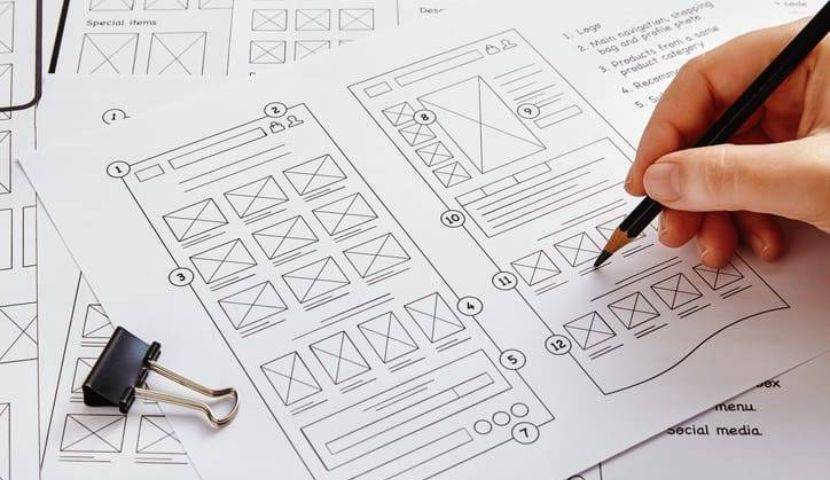The Fourth Deadly Sin of ERP Implementation
#4: Not Prioritizing the User Experience
In this article, we will explore the fourth deadly sin of ERP implementation: Not prioritizing the user experience. We will delve into the importance of UX in ERP systems, the challenges organizations face and the best practices for selecting an ERP that enables users to maximize its potential.

7 Deadly Sins of ERP Implementation
Some mistakes are the result of process-oriented or people-centric choices, and are easily avoided. These are The Seven Deadly Sins of ERP Implementation.
Why Prioritize the User Experience in ERP Systems?
Enterprise Resource Planning (ERP) systems are complex and multi-functional, serving the needs of various stakeholders within an organization. Without an intuitive user experience, the particular vendor or ERP software solution won’t matter—even if it has all the latest updates within it. It is crucial to provide an intuitive interface that allows users to perform their tasks efficiently.
"The user experience is everything. It incorporates all aspects of the end user's interaction with the company, its services, and its products." Don Norman, American cognitive scientist, design engineer, and professor in the Department of Design at Northwestern University
1. Increased User Adoption
User-friendly ERP software encourages employees to embrace the new technology and incorporate it into their daily workflows. When users find the system easy to use and navigate, they are more likely to adopt it fully, leading to higher user engagement and productivity.
2. Improved Task Efficiency
A well-designed custom ERP system streamlines business processes and eliminates unnecessary steps, enabling users to complete their tasks more efficiently. Intuitive navigation, clear data presentation and powerful search functionalities contribute to improved task efficiency and overall job performance from every user.
3. Enhanced User Satisfaction
Users who have a positive experience with an ERP are more likely to be satisfied with their work environment as well. A well-designed system reduces frustration and confusion, leading to higher user satisfaction and employee retention.
4. Reduced Training Costs
An ERP system design with an intuitive user interface and user-friendly tools requires less training for employees. This reduces the time and costs associated with training programs, allowing your organization to allocate resources to other critical areas, which may in turn be used to improve your business processes.
5. Increased Data Accuracy
User-friendly ERP software minimizes the chances of user errors and data entry mistakes. Simple data entry forms, validation checks and error notifications help ensure the accuracy of data, leading to better decision-making and reliable insights.

ERP software should cater to the needs of various users within your organization, including:
1. Individual Users
Junior staff, accountants, sales representatives, HR consultants and other employees who use the system for their everyday tasks
2. Functional Managers
Sales department managers or marketing managers who require a transparent platform to build sales forecasts without direct involvement in the UX design process
3. Executives
Decision-makers who have a substantial impact on the future ERP user experience but may not use it on a daily basis
4. Other Stakeholders
Customers and business partners who use the system and analysts who may influence decision-makers
"Historically, one of the key challenges in enterprise software has been the number of stakeholders involved and their conflicting agendas. This is the major barrier to improving the usability of ERP systems."
Jon Innes, UX Consultant
Challenges in Prioritizing an ERP User Experience
1. Complexity of ERP Systems
ERP complexity is one of the major challenges in prioritizing user experience in ERP systems. ERP solutions are inherently complex, encompassing various modules and functionalities. The top ERP modules include financial management, supply chain management and procurement, among others. Designing an interface that accommodates the diverse needs of every user can be challenging for any vendor. Look for a system that balances simplicity with functionality, which is crucial to prevent overwhelming users with an overly complex system.
2. Resistance to Change
Employees may resist the adoption of a new ERP if they perceive it as a disruption to their established workflows. Overcoming resistance to change requires effective communication, comprehensive training and ongoing support to help users understand the benefits of the new system and navigate the transition smoothly.
3. Inadequate User Engagement
If users do not feel engaged with the ERP solution, they may not fully utilize its capabilities or provide management with valuable feedback for improvement. Engaging users through personalized training, regular communication and input into the ERP customization and testing process enhances their sense of ownership and investment in the system.
4. Weak Vendor Support and Limited Customization
The responsiveness of the ERP vendor’s customer service—and their willingness to accommodate your customization requests—can significantly impact the user experience. Timely and helpful support is crucial for resolving issues and ensuring a smooth user experience.

ERP Design Best Practices
1. Choose a Scalable and Flexible ERP System
When selecting an ERP system, it is important to choose one that is scalable and flexible. A scalable ERP system can grow and adapt with your organization’s changing needs without requiring major overhauls or disruptions. Look for features such as cloud-based or hybrid deployment options, modular and configurable architecture, open and interoperable standards and a user-friendly interface.
Cloud-based or hybrid deployment options allow you to access critical data and applications from anywhere, reducing IT costs and maintenance. A modular and configurable architecture enables your organizations to add, remove or modify functionalities and workflows according to your specific requirements. Open and interoperable standards facilitate integration with other systems and platforms, such as CRM, e-commerce or social media. Lastly, a well-designed interface makes it easy for your employees to learn and use the system while accessing the information they need.
2. Involve Stakeholders in the ERP Project
To ensure successful ERP implementation, it is crucial to involve stakeholders throughout the entire process. Stakeholders include employees, customers, suppliers, partners and regulators. By involving them from the beginning, your organization can better understand the stakeholders’ needs, expectations and concerns regarding the ERP system.
Engaging stakeholders in the ERP project helps communicate your organization’s vision, goals and benefits of the system. It also enables you to gather feedback, suggestions and ideas for improving the existing ERP design and to ensure ERP usability. Additionally, training stakeholders to effectively use the ERP system creates a smooth transition and adoption of new ways of working, which can impact ERP performance and contribute to a great ERP user experience.
3. Implement Training and Change Management Best Practices
Training and change management are integral components of successful ERP implementation. Your organization should develop a comprehensive training and change management plan that covers the scope, objectives, roles, responsibilities, timelines, resources and metrics of the project.
Different types of training materials should be provided to cater to different learning styles and needs. These materials can include manuals, videos, webinars, simulations or coaching sessions. Organizing regular training and change management activities should be planned and delivered before, during and after ERP implementation, and should be regularly updated to reflect changes in the system and business environment, supporting the ongoing learning process.
It is important to measure and evaluate the effectiveness of training and change management initiatives to identify areas for improvement. By addressing gaps, challenges and opportunities, you ensure a smooth transition and adoption of the ERP system.
4. Monitor and Optimize ERP Performance
Monitoring and optimizing the performance of an ERP system is essential to ensure it is functioning well, delivering value and meeting expectations. Your organization should establish and track key performance indicators (KPIs) that measure the impact and outcomes of the ERP system on business processes, productivity, quality, customer satisfaction and profitability.
Collecting and analyzing data and feedback from the ERP system and stakeholders helps identify issues, trends and patterns that affect performance. Implementing corrective and preventive actions can resolve problems, enhance efficiency and prevent errors or failures. Your organization should also seek out and implement innovations and best practices that improve functionality, usability and security.
5. Plan for Future Upgrades and Enhancements
An ERP system is not a final destination but an ongoing journey that requires future upgrades and enhancements. To ensure the system remains up to date, compatible and providing a competitive edge, your organization should stay informed about the latest developments, trends and technologies in your specific industry and the ERP system itself.
6. Personalize the User Experience
An exceptional user experience in an ERP system involves personalization. Your organization should strive to create a user-centric design by developing user personas and user stories. This helps clarify who will be using the system and how all the employees can interact with it.
Providing customization options, such as the ability to rearrange modules or choose preferred data visualization formats through custom dashboards, empowers users to tailor the system to their specific requirements. This level of personalization enhances the user experience by meeting individual needs and preferences.
7. Responsiveness Across Devices
In today’s digital age, it is important for ERP software to be accessible across various devices, including smartphones and tablets. When vendors have implemented responsive design principles, they ensure that the system adapts to different screen sizes and resolutions.
8. Leverage the Expertise of an Experienced Team
Choosing an ERP solution with an exceptional user experience requires expertise and a deep understanding of both UX design and ERP specifics. Your organization should consider partnering with an experienced development team that specializes in ERP design and implementation.
Such a team can guide your organization through the entire process, from conducting user research to customizing and implementing the UX. They ensure that the system meets your business requirements and provides a seamless user experience for all stakeholders.
Prioritizing the user experience in ERP systems is essential for successful implementation and ERP adoption. ERP solutions should be equipped with user-friendly tools that simplify complex tasks and help users accomplish goals efficiently. By choosing an intuitive and user-friendly interface, providing comprehensive training and continuously gathering user feedback, your organization enhances user engagement, efficiency and overall satisfaction with the system.
The best ERP UX design practices outlined in this article serve as a guide for selecting an ERP system that is designed to enable users to maximize its potential and achieve the desired business outcomes. By focusing on the user experience, your organization creates an ERP system investment that delivers the expected value and drives business operations success.
By utilizing the knowledge offered by Ultra Consultants, your business ensures successful implementation of a new ERP system that takes into account user experience. With our knowledge in your specific industry, we will help you navigate the roadblocks you may experience during the process and help guide you towards all the benefits of a successful implementation.
Table of Contents
More ERP material...
Choosing a CRM System for Your Business
Data analytics holds the ability to highlight inefficient manufacturing processes and enable…
The Undeniable Benefits of Implementing ERP in Food and Beverage Manufacturing
Data analytics holds the ability to highlight inefficient manufacturing processes and enable…
Emerging Technologies in Manufacturing Driving Business Growth
Data analytics holds the ability to highlight inefficient manufacturing processes and enable…



